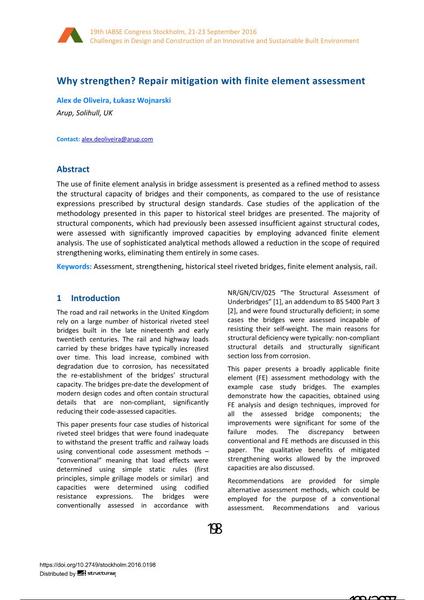Why strengthen? Repair mitigation with finite element assessment

|
|
|||||||||||
Bibliographic Details
| Author(s): |
Alexandre Oliveira
(Arup, Solihull, UK)
Lukasz Leszek Wojnarski (Arup, Solihull, UK) |
||||
|---|---|---|---|---|---|
| Medium: | conference paper | ||||
| Language(s): | English | ||||
| Conference: | IABSE Congress: Challenges in Design and Construction of an Innovative and Sustainable Built Environment, Stockholm, Sweden, 21-23 September 2016 | ||||
| Published in: | IABSE Congress Stockholm, 2016 | ||||
|
|||||
| Page(s): | 198-205 | ||||
| Total no. of pages: | 8 | ||||
| Year: | 2016 | ||||
| DOI: | 10.2749/stockholm.2016.0198 | ||||
| Abstract: |
The use of finite element analysis in bridge assessment is presented as a refined method to assess the structural capacity of bridges and their components, as compared to the use of resistance expressions prescribed by structural design standards. Case studies of the application of the methodology presented in this paper to historical steel bridges are presented. The majority of structural components, which had previously been assessed insufficient against structural codes, were assessed with significantly improved capacities by employing advanced finite element analysis. The use of sophisticated analytical methods allowed a reduction in the scope of required strengthening works, eliminating them entirely in some cases. |
||||
| Keywords: |
finite element analysis FEA rail strengthening assessment historical steel riveted bridges
|
||||
